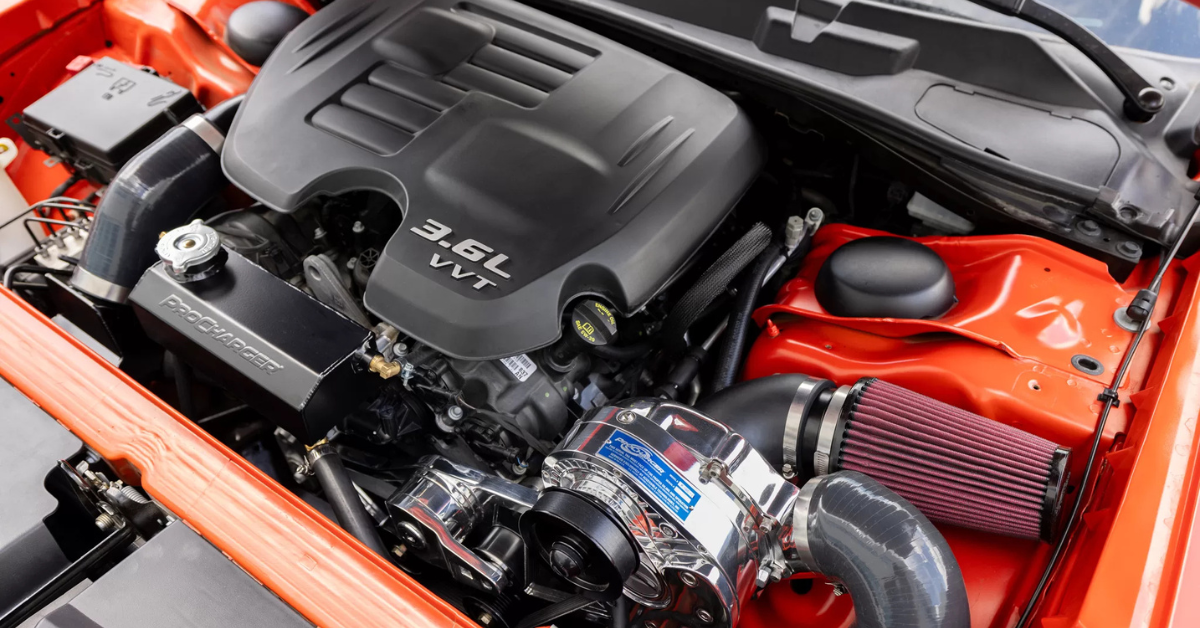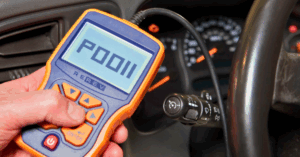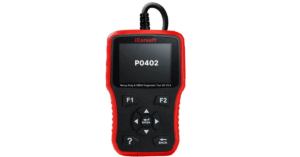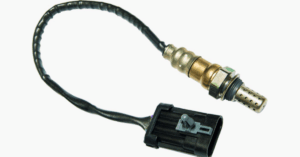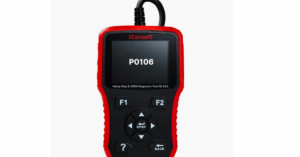The Dodge 3.6L engine, also known as the 3.6-liter V6 (219 cu in), is one of the manufacturer’s most versatile and durable engines ever built. It features smart engine configurations that rely heavily on the correct firing order, found in models like the Charger, Challenger, Grand Caravan, Journey, Durango, and RAM 1500. This guide helps drivers avoid common issues such as misfires, vibrations, noise, and excess heat, which occur when cylinders are not fired in the proper sequence.
The team behind its design focused on maintaining balanced power flow, smooth engine work, and reducing wear. Since each brand and engine type may use a different firing order, knowing the specific order for your Dodge is essential for long-term engine maintenance and performance.
What is the firing order on a Dodge Charger?
The Dodge Charger 3.6-liter Pentastar V6 follows a simple and smooth firing order of 1-2-3-4-5-6, which differs from the more complex 1-8-4-3-6-5-7-2 pattern used in the 5.7-liter V8. This clean sequence allows better power distribution, smoother operation, and fewer vibrations during performance. It’s a standard layout in V-type multi-cylinder engines, specially designed for reliability in six-cylinder setups.
In the 5.7-liter HEMI V8 engine, the Right Bank (Passenger’s Side) has cylinders 2, 4, 6, and 8, while the Left Bank (Driver’s Side) has 1, 3, 5, 7.
Knowing this cylinder numbering helps avoid mistakes during repairs or diagnostics.
The firing begins at cylinder #1, positioned on the front right bank of the engine. It continues in order through cylinders 2, 3, 4, 5, and 6, firing consistently. The passenger side includes cylinders 1, 3, and 5, while the driver side holds 2, 4, and 6, giving the engine an odd and even-numbered layout that simplifies diagnostics and repair.
This pattern is often represented as A1-B2-C3-D4-E5-F6, helping visualize the firing movement across both banks. I’ve worked on many SE, SXT, and GT trims of the 7th-generation LD Charger, and knowing this exact layout always saves time when dealing with spark plugs, coils, or ignition issues. It’s a trusted design that supports both performance and engine longevity.
Dodge Charger 3.6L V6 Firing Order
The Dodge Charger with the 3.6L Pentastar V6 engine follows a unique firing order of 1-2-3-4-5-6, starting at cylinder #1 on the front right side. As the crankshaft rotation continues, each stroke—ignition or exhaust—follows in a smooth cycle, moving through cylinders #2 and #3 and ending at #6 before the sequence repeats to produce steady mechanical power in this six-cylinder layout.
This engine pattern helps reduce confusion when working with coils, wires, or diagram checking. The guide, explanation, and short video can help you visualize how the firing order works. Many cars use a different setup, but the Dodge design remains reliable across its engines, with the consistent firing sequence and precise build being the source of accuracy.
”]Dodge Charger 5.7L HEMI V8 Firing Order
The Dodge Charger 5.7L HEMI V8 uses a firing order of 1-8-4-3-6-5-7-2, which is unique compared to the V6 layout. It begins by igniting cylinder #1 at the front of the left bank, moves to cylinder #8 at the rear right, and then continues through #4, #3, #6, and #5, with a final cross between #7 and #2 on the opposite banks. Each exhaust stroke and cylinder fire follows a balanced rhythm across the engine.
This firing setup is also applicable to other Dodge V8s, including the supercharged 6.2-liter HEMI V8 Hellcat, one of Dodge’s fastest models. Whether you’re working on the regular 5.7-liter or any high-performance variant, knowing this firing pattern helps avoid engine issues and improves service accuracy.
Firing Order of Dodge Charger Per Generation
| Dodge Charger Generation | Engine | Firing Order |
| 1st Generation (1966 to 1967) | 318 ci Small Block V8 | 1-8-4-3-6-5-7-2
(clockwise distributor rotation) |
| 361/383/426/440 ci Big Block V8 | 1-8-4-3-6-5-7-2
(counter-clockwise distributor rotation) |
|
| 2nd Generation (1968 to 1970) | 225 ci I6 (Slant-Six) | 1-5-3-6-2-4 |
| 318 ci Small Block V8 | 1-8-4-3-6-5-7-2
(clockwise distributor rotation) |
|
| 383/426/440 ci Big Block V8 | 1-8-4-3-6-5-7-2
(counter-clockwise distributor rotation) |
|
| 3rd Generation (1971 to 1974) | 225 ci I6 (Slant-Six) | 1-5-3-6-2-4 |
| 318/340/360 ci Small Block V8 | 1-8-4-3-6-5-7-2
(clockwise distributor rotation) |
|
| 383/400/426/440 ci Big Block V8 | 1-8-4-3-6-5-7-2
(counter-clockwise distributor rotation) |
|
| 4th Generation (1975 to 1978) | 318/360 ci Small Block V8 | 1-8-4-3-6-5-7-2
(clockwise distributor rotation) |
| 400 ci Big Block V8 | 1-8-4-3-6-5-7-2
(counter-clockwise distributor rotation) |
|
| 5th Generation (1982 to 1987) | 2.2L Turbo I4 | 1-3-4-2 |
| 6th Generation (LX) (2006 to 2010) | 2.7L/3.5L V6 | 1-2-3-4-5-6 |
| 5.7L/6.1L V6 | 1-8-4-3-6-5-7-2 | |
| 7th Generation (LD) (2011 to Present) | 3.6L V6 | 1-2-3-4-5-6 |
| 5.7L/6.2L/6.4L V8 | 1-8-4-3-6-5-7-2 |
What is the meaning of the firing order of an engine?
The firing order of an engine is the sequence in which its cylinders are ignited or fired. In gasoline engines, this happens through spark plugs, while in diesel engines, fuel is directly received and operated by each cylinder without a spark. Understanding how the engine fires keeps combustion smooth and efficient.
Factors that Affect the Dodge 3.6L Engine’s Firing Order
Several factors influence how the Dodge 3.6L engine fires, such as the fuel’s molecular structure, spark timing, air-fuel mixture, self-ignition temperature, and combustion wall chamber conditions. Each of these elements plays a role in the firing behavior and balance of the engine.
Read More:
Honda A123 Service: [ Meaning, Checklist & Service Cost ]
How to Fix Scratched Rims: [Quick & Easy Steps]
Dodge 3.6L Pentastar Vehicle Applications
The 3.6-liter Dodge engine follows a reliable firing sequence and has been a trusted base engine across many models. This engine in the Dodge Charger, Challenger, Avenger, Grand Caravan, and Durango offers consistent performance across the lineup.
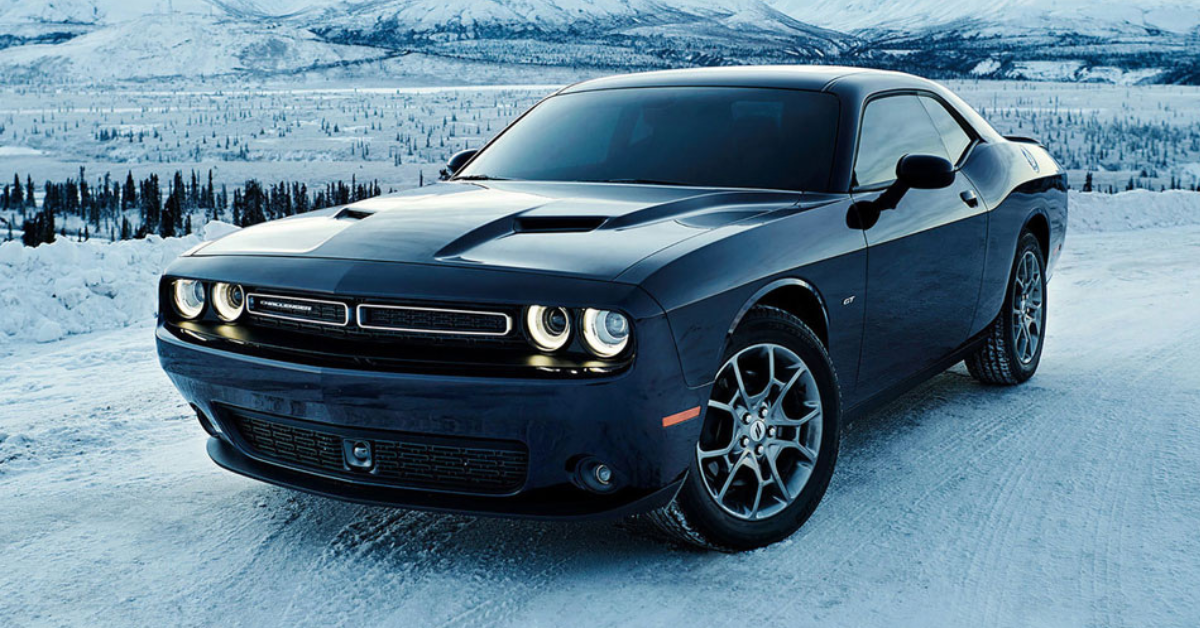
It’s also widely used in non-Dodge vehicles like the Chrysler 200, Town & Country, and Jeep Grand Cherokee, proving how versatile and dependable this 3.6-liter setup is across multiple platforms.
Why is a Firing Order Important?
The firing order is essential in designing engines because it helps reduce vibration, improve longevity, and maintain steady engine power output. A correct sequence ensures the engine runs smoothly, keeps the cylinders balanced, and avoids unwanted sounds or jerky movement during operation.
Neglecting the firing order may cause irreparable damage, stress buildup, or crankshaft disruption. It also affects fuel efficiency—incorrect timing leads to faulty combustion. A proper rhythm of spark, pistons, and delivery guarantees the engine fires effectively, preventing vibrations and keeping all parts safe and working in harmony.
What is Cylinder Numbering?
Cylinder numbering refers to the designated number assigned to each cylinder in an engine. It depends on the manufacturer’s design and whether the engine is a straight engine like I4 or I6 or a V engine like V6 or V8. The cylinders may be numbered sequentially based on their bank position or their spot on the crankshaft.
What Happens If You Get the Wrong Firing Order?

If an engine’s firing order is wrong, it won’t operate smoothly. Skipping the correct sequence can harm the engine—it may not begin, might backfire, or run roughly. The spark doesn’t happen correctly since fuel and air are squeezed together at the wrong time. That’s why knowing the exact, important order is key. Manufacturers specify it clearly in the owner’s manual.
How to Determine an Engine’s Firing Order
To determine your engine’s firing order, consult the owner’s manual or the manufacturer’s service booklet. The correct sequence depends on the vehicle design, engine, number of cylinders, and whether it’s a six-cylinder, 6-cylinder, or something else. Brands like Dodge and BMW differ, so their firing orders won’t match. Engines using a 4-digit sequence vary based on amount, design, and cylinder layout.
FAQS
What is the firing order on a 3.6 L engine?
The firing order is 1-2-3-4-5-6.
What is the firing order of the 3.6 Dodge Ram 1500?
It uses the same 1-2-3-4-5-6 firing order as other 3.6L Pentastar engines.
What is the firing order on a 2019 3.6 Dodge?
The firing order is 1-2-3-4-5-6, the standard for all 3.6L V6 models.
Where is cylinder one on a 3.6 Pentastar?
Cylinder 1 is located at the front right side of the engine (passenger side).

Mian Hashir is a passionate automotive enthusiast and the lead author at Car Garagee, a website dedicated to providing in-depth car reviews, maintenance tips, and the latest news in the automotive world. With years of experience in the industry, Hashir combines his technical knowledge with a love for cars to deliver insightful and engaging content. Whether you’re a car owner or a curious reader, Mian Hashir’s articles help readers make informed decisions, from choosing the right vehicle to understanding how to keep it in top condition.

